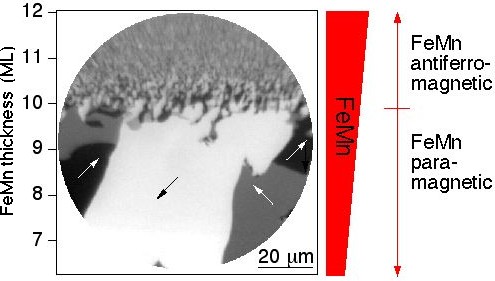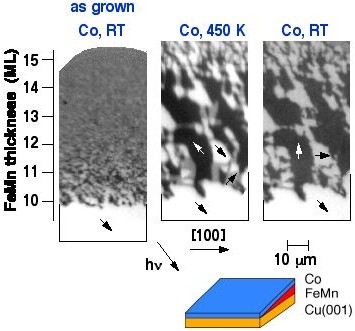
The magnetic coupling at the interface
between an antiferromagnetic and a ferromagnetic layer is of highest
fundamental and technological importance due to the encountered phenomena ("Exchange Bias"). Single crystalline
bilayers of Co (ferromagnet) and FeMn (antiferromagnet) can be prepared
by molecular beam epitaxy on Cu(001) in order to study the interaction at
well-defined interfaces.
The image shows the magnetic domains in an ultrathin Co layer after growth on an FeMn wedge. The FeMn thickness increases from bottom to top, as indicated at the left axis. Below 10 atomic layers (monolayers, ML) thickness, the FeMn layer is paramagnetic at room temperature, above 10 ML it is antiferromagnetic. A stunning change in the Co domains is observed at that thickness: While they are relatively large at FeMn thicknesses below 10 ML, on top of antiferromagnetic FeMn Co domains become very small.
